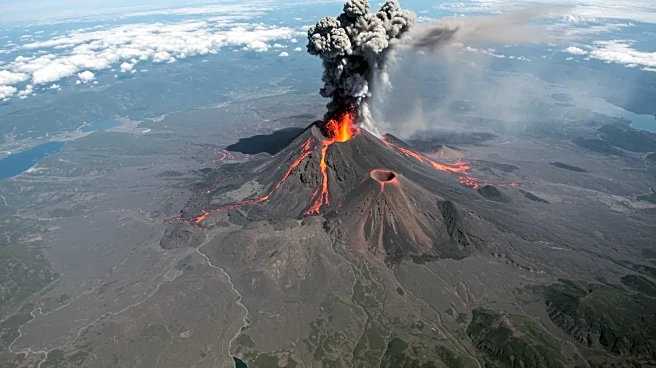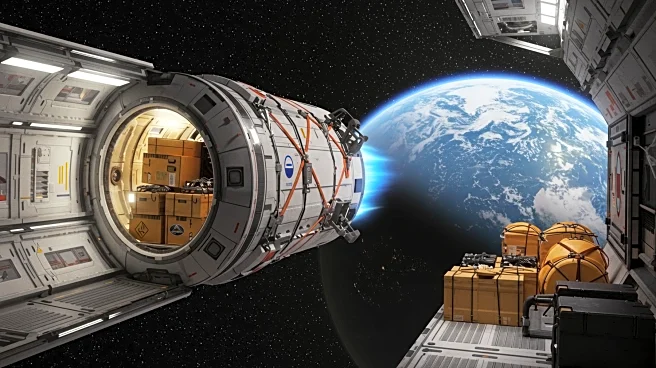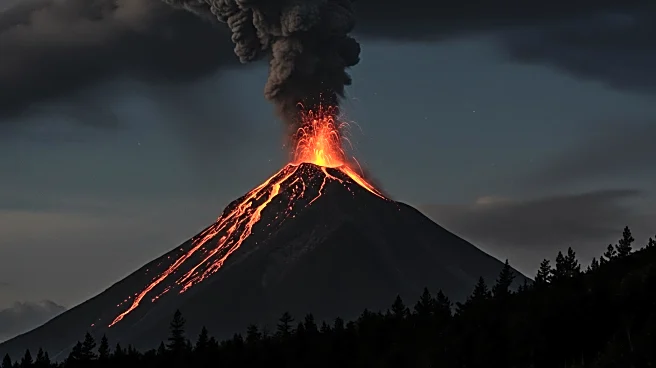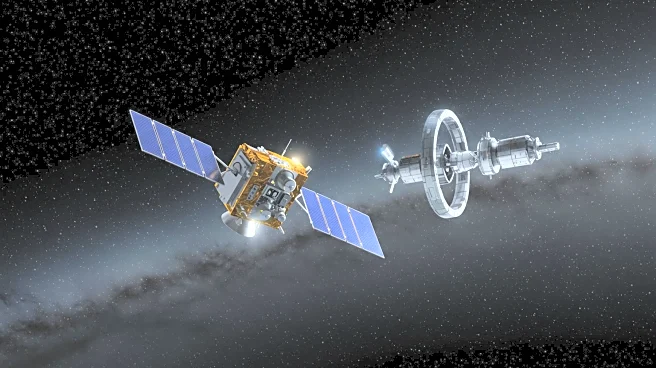Rapid Read • 9 min read
An astronaut aboard the International Space Station captured a striking photograph of the Kamchatka Peninsula in Russia's Far East, showcasing its dramatic topography and volcanic peaks. The image, taken on May 29, 2025, highlights the peninsula's width stretching over 350 kilometers from the Pacific Ocean to the Sea of Okhotsk. The photograph reveals snow and ice flanking the peaks of mountain ranges and volcanoes, with clouds filling the valleys. The tallest peak, Klyuchevskaya Sopka, stands at 4,754 meters above sea level, accompanied by other notable peaks such as Vulkan Kamen’ and Gora Ostryy Tolbachik. These stratovolcanoes are part of the Klyuchevskoy Volcanic Group, which is bordered by the Vostochnyy Khrebet and the Sredinny Khrebet ranges. The Kamchatka Peninsula is part of the 'Ring of Fire,' experiencing frequent tectonic activity. On July 29, 2025, a magnitude 8.8 earthquake occurred south of the Klyuchevskoy Volcanic Group, coinciding with volcanic eruptions, including Klyuchevskaya Sopka.
AD
The Kamchatka Peninsula's frequent tectonic activity and volcanic eruptions have significant implications for geological research and understanding seismic events. The recent earthquake and subsequent volcanic activity highlight the dynamic nature of the 'Ring of Fire,' a region known for its seismic volatility. These events can provide valuable data for geologists studying the relationship between earthquakes and volcanic eruptions. The photograph captured by the ISS crew offers a unique perspective on the region's topography and natural phenomena, contributing to scientific knowledge and public awareness. The intensification of volcanic activity poses potential risks to local communities and ecosystems, emphasizing the need for ongoing monitoring and preparedness in regions prone to such natural events.
The Kamchatka Peninsula will likely continue to be a focal point for geological studies due to its active tectonic and volcanic nature. Scientists may conduct further research to understand the triggers and impacts of seismic events in the region. Monitoring efforts will be crucial to predict and mitigate potential hazards associated with future earthquakes and eruptions. The data collected from the ISS and other sources will aid in developing models to forecast volcanic activity and improve safety measures for affected areas. Additionally, the public availability of such images can enhance educational outreach and awareness about the importance of studying Earth's dynamic systems.
The Kamchatka Peninsula's geological activity underscores broader environmental and safety concerns. The interplay between tectonic movements and volcanic eruptions can have long-term effects on the region's landscape and biodiversity. Understanding these processes is vital for developing strategies to protect local communities and preserve natural habitats. The photograph serves as a reminder of the Earth's powerful natural forces and the importance of international collaboration in space exploration and environmental monitoring. It also highlights the role of technology in capturing and disseminating information that can inform public policy and scientific research.
AD
More Stories You Might Enjoy










